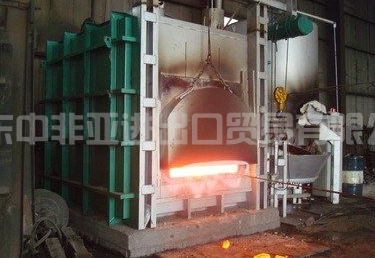

The working principle of the heating furnace is to put the workpiece into the inductor (coil), when the inductor passes a certain frequency of alternating current, the alternating magnetic field is generated around. The electromagnetic induction of alternating magnetic field produces a closed induced current ─ eddy current in the workpiece. The distribution of induced current on the workpiece cross-section is very uneven, the current density on the surface of the workpiece is very high, and it gradually decreases inward, this phenomenon is called skin effect. The electrical energy of the high density current on the surface of the workpiece is converted into heat energy, which increases the temperature of the surface layer, that is, surface heating is realized. The higher the current frequency, the larger the current density difference between the workpiece surface and the inside, and the thinner the heating layer. Surface quenching can be achieved by rapid cooling after the heating layer temperature exceeds the critical point temperature of the steel.
After the raw oil is mixed with new hydrogen and circulating hydrogen, and heat is exchanged with the reaction product. Enter the furnace in the gas-liquid miscible state and heat to the reaction temperature and enter the reactor.
After heat transfer, hydrogen is mixed into the reactor.
Reaction in the reactor catalyst bed. Sulfur, oxygen, ammonia, and metal compounds become readily removed substances (by hydrogenation to hydrogen sulfide, water, ammonia, etc.). The olefins are saturated simultaneously.
 简体中文
简体中文
